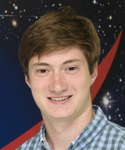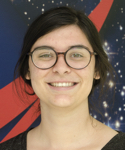2017 ASD Summer Interns
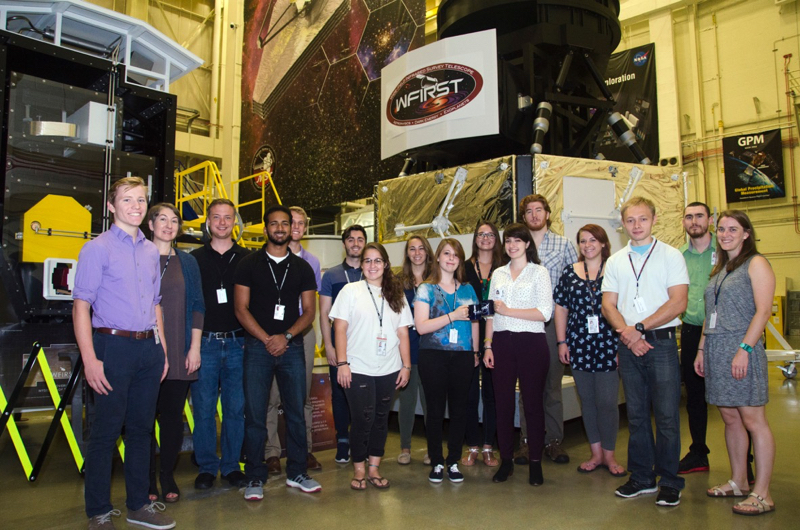
(Click any image to view larger version.)
About the Interns and Their Projects

Jimmy Acevedo (Mentor: Alan Kogut)
Jimmy Acevedo studies physics at North Carolina Central University. He recently graduated with an Associate of Science from Durham Tech, having returned to school after several years in the video game industry, and is eager to graduate in May 2018. This is his second summer with the Primordial Inflationary Polarization ExploreR (PIPER) cosmology project. This summer he has been calculating failure-modes for the balloon's rigging, testing spaceflight hardware through thermal cycles in vacuum, automating tests with Arduino, and custom-building short-order payload hardware. He was first inspired about engineering by NASA's Community College Aerospace Scholars program, North Carolina Space Grant's amateur ballooning competitions, and his faculty advisor Julie Hoover. He has devoted much of the last year leading his student teams for both the High Altitude Student Payload, a platform for collegiate research run by Columbia Scientific Balloon Facility and the Louisiana Space Consortium, as well as a remote sensing proof-of-concept study using drones to measure non-point-source pollution in local waterways. Occasionally he sleeps, attends class, or climbs (never at the same time.) After graduation, Jimmy seeks to continue in the field of scientific ballooning but is excited to be involved in any project that combines his passion for space exploration with his engineering resourcefulness. He would love to work in Antarctica.
Project: Ground Support Engineering for the Primordial Inflation Polarization Explorer

Jack Agolli (Mentor: Brian Hicks)
I am from Worcester, Massachusetts and I study aerospace engineering at Worcester Polytechnic Institute where I will be graduating early in December. When I was in middle school, my family and I visited Kennedy Space Center. It was my first actual exposure to NASA and I was able to witness many of its accomplishments firsthand. I purchased a small textbook on our solar system there and studied it for hours on end (I still have it to this day). Since then I have been always been captivated by space and driven by a desire to help advance space exploration and our understanding of the universe. In my free time some of my favorite things to do are playing soccer (go Gunners), playing the classical guitar, and traveling (I lived in London for several months).
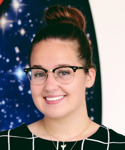
Lauren Arnold (Mentor: Knicole Colon)
I am a rising senior at the University of the Virgin Islands on St. Thomas, majoring in Marine Biology. My main focus will be shark mating behaviors. I hope to continue the shark research I conducted last semester for my masters degree, identifying a mating and pupping location for Tiger sharks (Galeocerdo cuvier) in the Virgin Islands. I wanted to be an astronaut when I was younger. I was accepted in space camp with a partial scholarship in 4th grade but was unable to attend due to the remaining tuition cost. I switched my focus from space to the ocean, leading me to major in marine biology. Last summer at Kennedy Space Center, I met two astronauts (Al Worden: Apollo 15 and Jon McBride: STS-41-G Space Shuttle Challenger) who said I could still be an astronaut with a marine biology degree. Knowing that, I wanted to get myself into NASA anyway I could, so I applied to two internships. Accepted to both, I chose exoplanets because of how different this topic is and how cool exoplanets are! I hope to work with NASA in the future. My hobbies include snorkeling with sea turtles daily, scuba diving, photography, astronomy, traveling, postcard collecting, and movie and concert going!
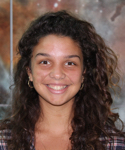
Jonisha Aubain (Mentor: Judy Racusin)
I am a rising sophomore currently studying Physics and Mechanical Engineering at the University of the Virgin Islands. I was born and raised on a little island in the Caribbean called St. Thomas in the United States Virgin Islands. My hobbies include camping, diving, fishing, spearfishing, hunting, and climbing, most often with my adventurous family! My heart belongs to nature, the trees, the sea, and the stars. My family is huge and makes up a bigger part of who I am, what I want to become, and what I strive for. A few things that I love are dancing to soca music, going on random adventures for ice cream at 3 in the morning, go cliff diving, and especially sitting with my family while my Papa tell amazing stories of life on the sea. Being raised by fishermen and being one of the first in my family to be in college, I have no idea what made me go into physics and engineering, and definitely would have never imagined interning at NASA, but this internship has opened me up to parts of astronomical sciences that I never knew existed, igniting more of my passion for depths of space, untouched by man.
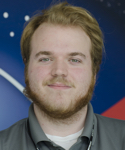
William Baker (Mentor: Joel Coley)
During this internship I preformed spectral analysis on an archival X-ray observations from XMM-Newton of LMC P3. LMC P3 is a High-Mass Gamma-ray binary (HMGB), which is embedded inside of the supernova remnant DEM L241 located in the Large Magellanic Cloud (LMC). The goal of this internship is to find the photon index, X-ray flux, and the column density of the system, so that it can be compared to approved XMM AO16 and NuSTAR Cycle 3 observations and hopefully give insight on any type of variability within the system.
Project: X-ray Observations of Gamma-ray Binary of LMC P3 (Poster)
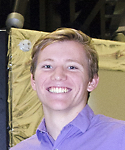
John Bartlett (Mentor: Edward Wollack)
I am a rising senior studying Mechanical Engineering at Cornell University. My interests include computational mechanics and mechanical design. I tell people that in my free time I enjoy biking, ultimate frisbee and hiking but if I am being honest I mostly just eat and sleep.

Sam Colosimo (Mentor: Michael Biskach)
My name is Sam Colosimo and I am a rising senior studying mechanical engineering at the University of Portland in Oregon. This summer, I am doing research on the manufacturing and assembly of single-crystal silicon, x-ray mirrors for the next generation of x-ray telescopes. My research interests include optics, fluid dynamics, vibrations, and renewable energies. After finishing my undergraduate career in Portland, I hope to continue doing research on the graduate level, and do science that has a positive impact on the world around me. When I'm not geeking on science experiments or engineering contraptions, I enjoy drinking coffee, riding on my skateboard, and playing bass guitar (poorly).
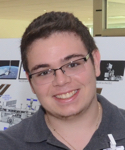
John Corcoran (Mentor: Kenji Hamaguchi)
Jack Corcoran is a rising junior at Cornell University Schools of Arts and Science, studying the wizardry of mathemagical arts. A local boy from the town of Crofton, he has been note by his peers as "definitely an intern at NASA", with stunning praises such as, "eh, he's a decent dude, I guess." and, "… a cool nerd". He can often be seen looking at X-ray telescope data (such as NuSTAR, XMM, and Chandra) combing the Carina Nebula for black holes, getting coffee to fuel this crusade, or writing a biography. Likes include asking people who are smarter than him questions, watching sunsets, gaming, collecting fidget spinners, and meeting all of the wonderful people who work at NASA. Dislikes include lifeguarding, mob mentality, and writing bios.
Project: X-ray Emission in the Carina Nebula: A Source of Mystery
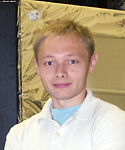
John DeVries (Mentor: Brian Hicks)
I am from the Chicagoland area and I studied at the University of Illinois at Urbana-Champaign for my undergraduate degree in Computer Science and Astronomy. Starting in the fall of 2017, I will be continuing my education at California State University Los Angeles. I've been passionate about studying Astronomy from a young age and my passion was reinforced when I looked at the Galilean moons of Jupiter through a small refractor that my dad received as a work anniversary present. My shoe size is strongly dependant on manufacturer, but can be approximated by a Gaussian distribution with µ ≈ 10.5 and σ ≈ 0.5.
Project: Characterizing Single-mode Fiber Arrays for use in Directly Imaging Exoplanets
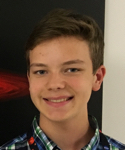
Tobias Eegholm (Mentor: Jeffrey Livas)
I am a rising senior at River Hill High School in Howard County, Maryland. This is my first year as an intern here at NASA, but it will hopefully not be my last. This summer, I interned on the Laser Interferometer Space Antenna, or LISA mission in Code 663. I simulated and tested op-amps for photoreceivers that will measure gravitational waves. I have also been 3D printing a scale model of the LISA "Sciencecraft" to be published for educational and outreach purposes.
Project: Photoreceiver Measurements for the LISA Mission & Development of a LISA Sciencecraft 3D Model

William Fanning (Mentor: Michael McElwain)
I'm from Deltona, Florida, a town not far from Orlando, and I'm a rising senior at Embry-Riddle Aeronautical University. I graduate with a B.S. in Astronomy & Astrophysics in mid-December. My interest in astronomy comes from my love of science fiction, my math skills, and from the infinite amount of knowledge to be gained from studying the universe. My project involved creating a planetary distribution model of nearby stars (within 20 pc of Earth), to predict what exoplanets the WFIRST coronagraph can observe, and where they could be. Outside of my work at NASA, you can find me trapped in a good book, listening to music, or both. After I graduate, I plan to obtain a PhD in Planetary Science or Astrophysics.
Project: Exoplanet detection synergies between Gaia and the WFIRST Coronagraph (Poster)
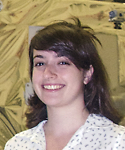
Adina Feinstein (Mentor: Joshua Schlieder)
I am from Syosset, NY and I study at Tufts University in the greater Boston area, graduating this year with a bachelor's degree in astrophysics with an English minor. After graduation, I hope to further my education by pursuing a PhD in Astronomy. I first fell in love with astronomy my freshman year of high school. Luckily, I attended a school that nurtured research and was able to pursue this passion throughout my high school years, continuing into college. And to any graduate admissions board member who has Googled my name and come across this blurb, thank you for considering me as a candidate for your program!
Project: Characterization of Young Red Dwarfs in the Solar Neighborhood
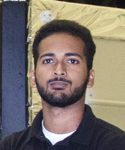
Gabriel Grell (Mentor: Michael McElwain)
I am from Baltimore, Maryland and I am a rising senior studying astrophysics and physics at Harvard University. What drew my interest to astronomy is the fact that there are endless questions and possibilities in the realm of outer space, from the origins of the Universe to the recently detected gravitational waves. Working at NASA has always been my career dream, not only to further my knowledge of astronomy, but to also make significant contributions to the biggest space program in the world. Receiving the opportunity to do so this summer has been an incredible experience. Long term, I plan on pursuing a PhD in either astrophysics or aerospace engineering.
Project: Exoplanet Imaging Using a Lenslet Array to Suppress Starlight (Poster)
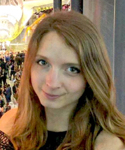
Hannah Hastings (Mentor: Jeffrey Livas)
Hannah Hastings is a graduate student at the University of Pennsylvania in the Nanotechnology M.S.E Program. She graduated from Bryn Mawr College in 2016 with a B.A. in Physics and minor in Environmental Studies. At Bryn Mawr, she did research with Prof. Michael Noel in ultra-cold Rydberg atoms. She also ran varsity track and cross country for four years, her favorite event being the 3k Steeplechase.
Project: Technology Development for LISA

Ryan Hastings (Mentor: Jeffrey Livas)
I am from Bloomington, IN and recently graduated from Indiana University with a bachelor's degree in Physics. This upcoming fall, I will be starting a PhD in electrical engineering at Purdue University. I have been interested in science from a very young age, partly because both of my parents have science-related careers, and partly because I have had fantastic science teachers over the years. For a long time, I have been particularly interested in NASA and space-related technology. Thus, this internship has been a fantastic opportunity for me.
Project: Laser Frequency Stabilization for LISA Mission (Poster)
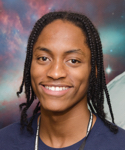
Shiquoi Isaac (Mentor: Sara Buson)
I am a junior at the University of the Virgin Islands on St. Thomas, Virgin Islands. I am part of the dual degree applied mathematics and engineering program and I am also pursuing an Associates in Physics. Interning at NASA has been a great accomplishment for me because as an upcoming mechanical engineer, there was so much for me to learn and so much people to meet. I studied blazars using Fermi LAT to characterize their flux variations over time. My goal is to finish my studies and be able to improve the small island of St. Thomas by giving college students similar opportunities as I got this summer.
Project: Analyzing Gravitationally Lensed Blazars with Fermi LAT: Where do AGNs get their energy from? (Poster)
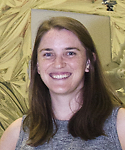
Margaret Lazzarini (Mentor: Ann Hornschemeier)
Margaret Lazzarini is a graduate student at the University of Washington pursuing a Ph.D. in astronomy. She received her B.S. in Astronomy & Physics from Yale University. Between college and graduate school she worked for two years as a high school physics and astronomy teacher in Los Angeles while pursuing an M.A. in Urban Education with a focus in educational technology. At NASA, Margaret works with Dr. Ann Hornschemeier using combined X-ray and optical data from NuSTAR, Chandra, and Hubble to study the X-ray binary population of M31.
Project: A Multiwavelength Study of X-ray Binaries in M31 with Hubble, Chandra, and NuSTAR (Poster)

Rachel Losacco (Mentor: Camilla Pacifici)
I am a senior at Stony Brook University studying Astronomy and Physics, and will be graduating early in December. This summer I analyzed simulated galaxies, trying to relate their star formation histories to observable properties. In other words, I made beautiful plots in python, the prettiest of which are featured in my poster linked below. The best part about studying stars and space is staring at a computer screen for 40 hours a week, running on cheap coffee and the occasional free pizza. I have often wondered if I can fit into a size 6.5 or 7.5 shoe, but alas, the answer is always no; I am forever a size 7.
Project: Galaxy Formation From Cosmological Simulations And Observations (Poster)

Juan Carlos Martinez (Mentor: Amy Lien)
My name is Juan Carlos Martinez, and I am from St. Thomas U.S. Virgin islands. I am a rising senior currently attending the University of the Virgin Islands, but plan on transferring to the University of the South Florida this upcoming fall to finish my studies. I am currently pursing a B.A. in Mechanical Engineering and Applied Mathematics, with an A.S. in Physics. My dream is to obtain a Master's degree in Aerospace Engineering, and open an Engineering business with my two younger brothers.
Project: Exploring the Pulse Structure of the Gamma-Ray Bursts from the Swift Burst Alert Telescope
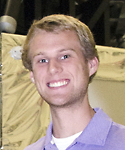
Tyler McCabe (Mentor: Brian Hicks)
I am from Mechanicsburg, Pennsylvania and attend Florida Institute of Technology where I am studying astronomy and astrophysics. For as long as I can remember, I have found myself staring up at the night sky and wanting to learn more about what all the bright spots are all about. That curiosity has yet to go away and pushed me to pursue a degree in astronomy. In my spare time, I am an avid runner and currently compete as a member of the Florida Tech cross country and track and field teams.
Project: Optical Design and Image Post Processing for the Direct Imaging of Exoplanets (Poster)
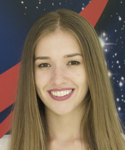
Kaitlin McTague (Mentor: Ira Thorpe)
Kaitlin M. McTague is a 5th year at The Ohio State University and will graduate with her bachelors degree in aerospace engineering with a minor in physics this spring. She intends to take a gap year with NASA working on engineering robotics for Mars missions before going to graduate school for physics. This summer, Kaitlin worked with the gravitational astrophysics laboratory on the LISA mission, intended for the space-based detection of gravitational waves in the early 2030's. Her role was the simulation of time delay interferometry, or the specific methods by which a space-based gravitational wave detector is able to mimic a ground-based detector. Using these processes, Kaitlin was able to show that the strategic combination of known Doppler variables could lead to cancellation of the otherwise overwhelming laser noise, thus revealing a small, but obvious gravitational wave signature from objects as little as a nearby white dwarf binary. In her relatively nonexistent free time, Kaitlin can be found cooking, weightlifting, and more recently, solar eclipse chasing.
Project: Data Analysis and Modeling for LISA Pathfinder
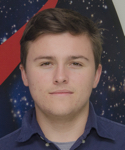
Chris Murphy (Mentor: Ann Hornschemeier)
Chris Murphy is a sophomore at the University of the Virgin Islands, studying Physics with a concentration in Astronomy. Born and raised on the island of St. Thomas, this summer was the longest that he's been away from home. At GSFC, Chris worked with Ann Hornschemeier and the GSFC X-ray galaxies group. He investigated the available Hubble data of NGC 253 in order to identify the optical counterpart of a possible Wolf-Rayet X-ray binary.
Project: UVI MIRO: X-ray studies of galaxies near and far
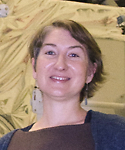
Charlotte Olsen (Mentor: Antara Basu-Zych)
Not remembering a time when she wasn't obsessed with astronomy, Charlotte Olsen has always been a source of grand and annoyingly hard to answer questions. This has led her to her current fixation with using multi-wavelength observations to study the properties of galaxy interactions. Charlotte has been using Swift UVOT fill in target observations of interacting galaxies to try to relate recent star formation to interaction geometry and mass ratio. Charlotte recently graduated from Humboldt State University with a B.S. in Physics (Astronomy Option) and a Mathematics Minor, and will be pursuing a PhD in Astrophysics at Rutgers University starting in the Fall of 2017. When she's not staring at galaxies, she reads or plays bass.
Project: A Swift Search for Stellar Birth: Using Spectral Decomposition of Interacting Galaxies to Probe New Star Formation with Swift UVOT Observations (Poster)
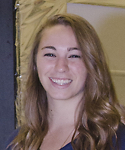
Sydney Paugh (Mentor: Bindu Rani)
I'm from a Edina, Minnesota and am currently studying at the University of St. Thomas in St. Paul, Minnesota. As a senior this coming year, I'm working on completing my undergraduate degree in physics with a minor in mathematics. I've always had a passion for space, which is what led me to change majors after studying biology, chemistry, and French freshman year. I'm considering attending graduate school in the near future, but I have yet to decide what I want to pursue as a graduate degree. I'm an avid runner, CrossFitter, singer, Netflix binger, and a lover of all foods and nerdy things.
Project: Exploring Extremely Bright Gamma-Ray Flashes from BL Lacertae (Poster)
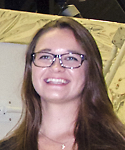
Samantha Pedek (Mentor: Edward Wollack)
I was raised on a small hobby farm in Southwestern Wisconsin, where endless crops are broken up by small dairy farms. I am a rising senior at the University of Wisconsin-River Falls, in River Falls, Wisconsin, majoring in Physics. The night sky has always fascinated me. From a young age, my family would make an event of watching meteor showers in the summer (now I know they were the Perseids). From there I was hooked. I am passionate about learning more about the universe we live in and as I learn about the universe, my passion continues to grow. Working at NASA GSFC has only added fuel to the fire.
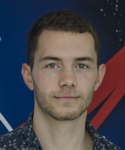
Josh Portnoy (Mentor: Eleonora Troja)
I am a senior at University of Colorado, Boulder studying Physics. Growing up around D.C. facilitated my passion for astrophysics through the National Air and Space Museum, where my father and I spent almost every free weekend of my youth. Over the course of my NASA internship, I created an analytical model of neutron star mergers for predicting late-time radio emissions caused by their ejecta. If proven accurate, these radio emissions will serve as electromagnetic counterparts for localizing gravitational wave events. Outside of NASA, my interest in high-energy physics goes far beyond the scope of astronomy as a research assistant working on Plasma/Laser Wake-field Acceleration (PWFA/LWFA) which, simply put, is the future of particle accelerators and ground-based high-energy physics. When I'm not making the world a better place through laser-driven plasma diagnostics, I can be found climbing in the Rockies or hiking the local mountains; sometimes both! Rainy days are best spent in a cozy chair contemplating Schrodinger's poor cat(s). How many must have perished before he learned to simply keep the box shut, and could this have been philosophically applied to the contents of Pandora's box?
Project: Modeling Late-Time Radio Emissions from Neutron Star Mergers
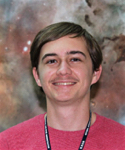
Rodney Querrard (Mentor: Joanne Hill-Kittle)
I am from St. Thomas, United States Virgin Islands and I am currently a student at the University of South Florida in Tampa after transferring from the University of the Virgin Islands. I am pursuing a 3-2 dual degree in Applied Mathematics and Mechanical Engineering. As a second year intern, I was quite excited to return and continue to explore what NASA has to offer. This summer, I worked on detectors for higher energy x-ray polarimetry. Being able to gain hands on experience is very influential and motivates me to reach my goals, achieving a Masters Degree in Aerospace Engineering and working for federal agencies or other airline companies. Besides work and school, I enjoy reading, diving, fishing, photography, and doing any outdoor activities.
Project: X-Ray Polarimeter Detector Development: Higher Energy Polarimetry
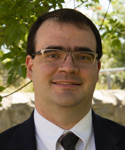
Kyle Rankin (Mentor: John Krizmanic)
Kyle is a graduate student at New Mexico State University (NMSU) studying Aerospace Engineering. While at NMSU, Kyle has worked on several CubeSat, including the INCA CubeSat scheduled to launch in early 2018. On INCA, he started working as an attitude control engineer, eventually becoming the missions Chief Engineer. Additionally, while at NMSU Kyle worked on the DARCSIDE CubeSat, a concept study done for NASA's JPL where it was studied what could be accomplished with a 3U CubeSat deployed from JPL's Europa Clipper mission. Finally, Kyle is working on the Virtual Telescope for X-ray Observations (VTXO) for his graduate research. This is a collaboration between NMSU, University of New Mexico (UNM), and NASA's Goddard Space Flight Center to develop a telescope with an extremely long focal length. This is achieved by flying the lens on one spacecraft, and the detector on a second then holding a rigid formation between the two.
Project: Virtual Telescope for X-ray Observations (Paper)
Violet Replicon (Mentor: Ann Hornschemeier)
I can't remember a time when space didn't fascinate me. I have always wondered how people could go on with their day and not wonder about what is out there. I knew that I had to spend my life studying it. To do this, I am currently in the process of getting my bachelors in Astrophysics at University of New Mexico. Working at NASA has been a dream come true and has given me great insight into what it is truly like to be an astrophysicist. In my free time I like to travel as much as possible and play way too many board games.
Project: Detecting Galaxies with eROSITA

Elise Rimsa (Mentor: Regina Caputo)
I am from Naperville, Illinois and am a senior at Marquette University in Milwaukee, Wisconsin. I am studying physics with minors in astronomy and biology. I was always all over the place with what I wanted to do when I was younger until my dad started asking my sister and me trivia questions about space, which sparked my interest in science. These trivia questions and many physics and astronomy documentaries eventually lead to my decision to pursue physics in college and my dream to work at NASA. I have many academic interests from astrophysics to bioastronautics and plan to begin my graduate degree next fall (field TBD). This summer I worked on detector simulations, using spectra from a new class of blazars, MeV blazars, for the proposed All-sky Medium Energy Gamma-ray Observatory (AMEGO).
Project: Development of Future Space based gamma-ray missions
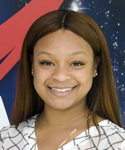
Keyanna Ryan (Mentor: Ira Thorpe)
I am a junior at Delaware State University, majoring in bioengineering. This past summer I carried out research in the astrophysics science division on gravitational waves. I came in with little background or experience in astrophysics or gravitational waves. Working on the gravitational waves instruments for LISA I learned a lot. I was asked to use Matlab as part of my project. I had used this analysis software before and found myself developing my Matlab expertise as I created graphics, solved mathematical problems and carried out data analysis. Along with using Matlab, I also gained hands on experience as I successfully created a Sagnac Interferometer as it relates to LISA. The purpose of building a Sagnac Interferometer was to measure non-reciprocal phase noise traveling in opposite directions through the backlink fibers on LISA. Although the result we wanted was not achieved, there are still high hopes of getting better results by adding a local oscillator.
Project: DSU: Laser Metrology for Gravitational Wave Instruments

Daniel Smith (Mentor: John Krizmanic)
I am a graduate student in electrical engineering at New Mexico State University. My advisor is Dr. Steve Stochaj. I live in Las Cruces New Mexico. I was inspired by my robotics mentor in middle school, of which some of the competitions were space related which got me interested in space. This changed the way I perceived the world when I looked at things I was in question of how things worked, why they worked, and can it be made better. As a hobby, I like to restore and work on cars. I am working on the Virtual Telescope for X-ray Observation (VTXO) project. VTXO is funded under the NASA EPSCoR program. Specifically, I am comparing the relationships between designs of the phase Fresnel Lens for this mission, and how they affect image performance as a function of focal length. Furthermore, I have compiled a list of bright X-ray sources for the that could be measured in a cubesat-based mission. An example is for a 3 cm PFL, with sources of Sco X-1, Cyg X-1, Cyg X-3, and GX 5-1 can be imaged with 1,000 photons in approximately an hour of observation time.
Project: Virtual Telescope for X-Ray Observation: Phase Fresnel Lens Design and Mission Concept
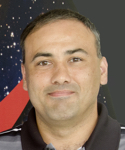
Josh Sylvia (Mentor: Mike Greason)
Josh Sylvia is a senior at San Jose State University (SJSU), majoring in Software Engineering. He is proficient in many different computer systems, both hardware and software, and earned multiple certificates in Information Technology (IT). His internship here at NASA has solidified his passion for a career path in Software Engineering. This summer he worked on website and application development for past missions that had studied the early cosmos. He also had a chance to visit mission operations on current missions and attended colloquium of future missions. Being inspired by the challenges that many of the scientists and engineers had to overcome on these missions, he is looking forward to the future.
Project: Legacy Archive for Microwave Background Data Analysis

Dan Taylor (Mentor: Mike Arida)
My name is Dan Taylor, I'm an intern with the Astrophysics Science Division here at Goddard. My project will contribute to the Science and Exploration Directorate's information security. I'm from sunny Southern California, I climb rocks after class at Southern Utah University, I enjoy working with people and creating new technology to get things done. I love coming to work because like many here at NASA I believe each generation has a responsibility to safeguard our knowledge and to contribute; to push humanity a little farther. My project deliverable was secure log monitoring and analysis infrastructure, at a reasonable cost, that can provide timely information on every host in Science and Exploration Directorate (SED, Code 600). With a real time view of all their endpoints, System Administrators can more effectively monitor systems and advise scientists on optimization.
Project: Enterprise Class Logging, for Free

Beverly Thackeray (Mentor: Elisa Quintana)
Project: Are Exoplanets in the Habitable Zone of M Dwarfs Truly Habitable?
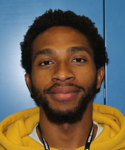
Jahreem Thompson (Mentor: Joanne Hill-Kittle)
Hello, my name is Jahreem Thompson. As of Fall 2017, I will be a 19-year-old junior attending the University of the Virgin Islands. I am an undecided engineering major with aspirations to become an architect. Currently, I am leaning more towards civil engineering as I feel it will bring me closer to my dream of owning an architecture firm. My major educational goals include receiving a Bachelor's and Master's degree first in civil engineering, pursue a Bachelor's degree in architecture, and finally a Doctorate in civil engineering. I am very passionate about creative thinking, critical thinking, free thinking, education, physical fitness, design, creation, personal growth, spirituality, and finding ways to use my skills to help those in need. I hope to use the skills, talents, and knowledge I develop to make major changes in my own life and the lives of those I encounter.
Project: The Next Generation of Polarimeters: X-Ray Polarimeter Detection Device
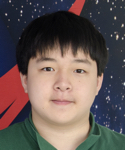
Nathan Yam (Mentor: Bernard Rauscher)
I am a rising junior at Mills E. Godwin High School in Richmond, Virginia. I am an active member of my school's robotics team TALON 540. On the team, I primarily work with electrical components and am interested in pursuing electrical engineering in the future. I enjoy playing chess, music, and video games.
Project: Characterization of Piezoelectric Actuators at Cryogenic Temperatures
Points of Contact/Organizers
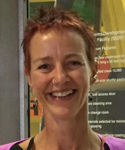
Joe Hill; Deputy Division Director, Code 660; Bio
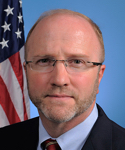
Rich Barry; Scientist, Code 667; Bio
Dr. Richard K. Barry is an astrophysicist with NASA at the Goddard Space Flight Center in Greenbelt, Maryland. He works in the Laboratory for Exoplanets and Stellar Astrophysics investigating exoplanetary disks, m-dwarf stars, transiting planets and microlensing planets. He is also interested in theoretical aspects of the evolution of the habitable zones around stars as those stars evolve onto and off of the zero age main sequence. Dr. Barry develops technologies for ultra high spatial resolution astronomy necessary for direct imaging of exoplanets and has acquired five degrees - two in science and three in engineering. In his career he has worked as an aircraft technician, a particle accelerator engineering technician, a NASA Space Shuttle engineer, a spacecraft power systems engineer, an astronomical instrument design engineer, and now as an astrophysicist. Dr. Barry is formerly the lead power system engineer on the X-ray Timing Explorer, the Wide Field Infrared Explorer and the Transition Region and Coronal Explorer. Dr. Barry is a project study scientist for the WFIRST mission and now leads investigations into the application of Bayesian analysis and machine learning in the modeling of microlensing systems. He is the doctoral thesis advisor for two astronomy students; Stela Ishitani Silva and Sean Terry both of Catholic University of America, and one electrical engineering student, Asmita Korde-Patel of the University of Maryland Baltimore Campus.



